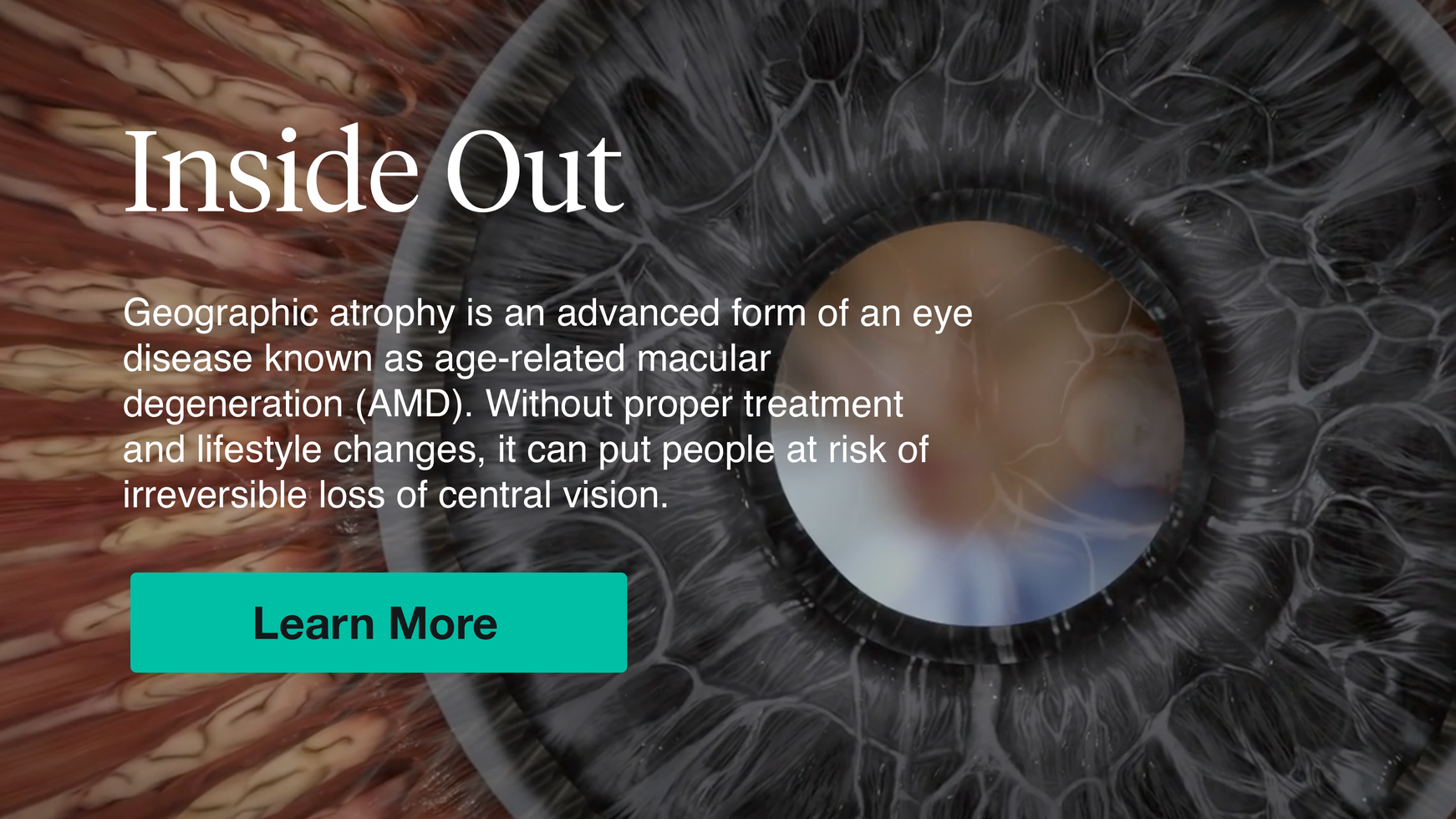When you are living with any type of age-related macular degeneration (AMD), your day-to-day habits and lifestyle will play an important role in how you manage the condition.
Here, we look at some of the healthful habits and lifestyle changes that may help preserve the health of your eyes—and benefit your overall health as well—when living with geographic atrophy, an advanced form of dry AMD.
Understanding geographic atrophy
Like other forms of AMD, geographic atrophy primarily affects a part of the retina called the macula. The macula is located at the back of the eye and is made up of millions of light-sensitive cells called photoreceptor cells.
Photoreceptor cells are the cells that take light that passes through the eye and convert it into nerve signals that can be interpreted by the brain. (Keep in mind that this is a very simplified explanation of a complex neurological process).
When a person has geographic atrophy, clusters of photoreceptor cells have died, and no longer function. These dead clusters of photoreceptor cells are also what give geographic atrophy its name—on close examination, they have the appearance of geographic features on a map.
When a person with geographic atrophy is reading a page of text, words may appear to be missing. When they look at a person’s face, features may appear to be missing. They may have difficulty seeing in dim lighting.
This can make everyday tasks difficult—and potentially unsafe. It can also be very distressing.
A person with geographic atrophy will lose vision in specific parts of their eye. A person may not notice that something is wrong at first, but the atrophied parts of the macula typically expand with time, which means geographic atrophy tends to get worse over time.
Healthy habits for healthier eyes
Advanced AMD is associated with several modifiable risk factors. Making healthier choices after being diagnosed with an advanced form of AMD like geographic atrophy can help slow the progression of vision loss and keep the eyes as healthy as possible.
- Stop smoking (if you smoke). Also avoid secondhand smoke. Tobacco smoke contributes to the progression of AMD.
- Consume less alcohol. Some research suggests that increased alcohol consumption increases the risk of geographic atrophy.
- Lose weight (if you are overweight or obese). Being overweight or obese has been associated with a greater risk of late-stage AMD.
- Take a look at your diet. Include plenty of green leafy vegetables and colorful fruits and veggies. Eat fatty fish (like salmon, tuna, or mackerel) twice a week. These foods provide nutrients that are important to eye health. Talk to your healthcare providers about foods you should be eating more of—and foods you should be avoiding.
- Exercise for 30 minutes a day. Talk to your healthcare providers about how to exercise safely.
How do these changes make a difference? Your eyes are like any other part of your body, they require adequate nutrients and good circulation, and they are damaged by tobacco smoke. These changes can also improve your health in other ways—including cardiovascular health and mental health.
Treatments for geographic atrophy
If you have geographic atrophy, the most important thing you can do is work with your healthcare providers. While there are currently no approved treatments available for geographic atrophy, visual rehabilitation can make a difference, and treating AMD can help slow the progression of vision loss.
There are also treatments for geographic atrophy in development. These include numerous drugs, as well as gene therapies and cell-based therapies.





